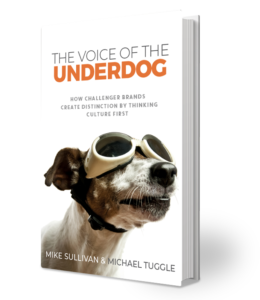Challengers zig while others zag, and generally wreak havoc on competitors by showing up in a way that’s anything but expected. Challengers take consumers and competitors alike by surprise, which in turn provokes something every marketer desperately wants and needs—a response. Love them or hate them, challengers will not be ignored.
At the challenger workshop in Silicon Valley, I happened to meet the founder and CEO of a regional retail chain of mattress stores who was puzzling over a problem many marketers face. He wanted to know how he could create real brand distinction and drive more retail traffic in his highly commoditized category. The Great Recession was just beginning to gain its head of steam and consumer wallets were tightening fast. Little did we know how bad things were going to get.
A few months after meeting at the workshop, I got a call from the CEO asking if we’d like to handle his advertising account. His mattress chain was still struggling with traffic, and sales had gone from slow to sluggish across his thirty locations. By now the economy was in full seizure. Retailers across all categories were shifting into survival mode and the CEO was very near panic. With sales trending fast in the wrong direction, the idea of differentiating his brand and driving store traffic had escalated from important to urgent. He needed an idea to turn up the volume, and he needed it quickly.
The concepts Mark Barden shared at the challenger workshop were fresh on my mind as our ad agency tackled the CEO’s problem. It’s tempting to focus on advertising messaging and media levels when sales are weak, but we knew this wasn’t simply an advertising problem. Besides, the CEO had no more money to spend on media, and his messaging was on par with the rest of the category. Mattresses are always on sale, after all.
We knew the brand had to do something to disrupt the market, and it needed to be rooted in a point of difference. But not just any difference. It had to be a difference that customers would find important and engaging, especially given the context of a faltering economy and stingy spending on discretionary products like mattresses. As part of our research, we sent agency team members on field trips posing as mattress shoppers. They shopped our client, and they shopped his competitors, and they came back with an insight. The answer to our new client’s dilemma lay hidden in operations and his company’s extraordinary commitment to sales process and training.
The mattress CEO was relentless about doing right by customers, and this made him very particular about hiring and training. The company’s extensive sales training far exceeded that of competitors, and the result was a genuinely superior customer experience. His salespeople behaved more like knowledgeable consultants than the typical high-pressured hucksters who give the retail mattress category its well-deserved bad rap. And, as we did our research, we happened upon a critically important detail that would turn out to be this client’s challenger brand rocket fuel.
Because the chain’s sales practices were famously low-pressure and informative in nature, customers routinely purchased the right mattress for their needs. The CEO surmised that his company’s superior approach to sales was the reason their average ticket exceeded the industry’s. He never gave much thought, however, to the company’s far below average product return rate, which was also a byproduct of sales methods that prioritized customer satisfaction over a fast buck.
In fact, the number of returns for our client’s mattress chain were inconsequential compared to the balance of the category and especially low by comparison with the category leader, a brand well known for their hard-closing conquest approach to sales. This was a significant but hidden challenger advantage, and our client hadn’t leveraged it at all. On the contrary, his chain had been following the category norm for mattress returns, which was a particular pain point for customers. The category’s standard 30-day return policies are intentionally and notoriously draconian because, as anyone who has ever shopped for a mattress knows, high-pressure mattress sales practices result in extreme levels of post-purchase dissatisfaction. Making it easy for customers to return the product would devastate operations and sales for most chains in the mattress category.
The way the category was zigging in this respect presented the perfect opportunity for our new client to zag. So, our agency made a bold recommendation straight out of the challenger branding playbook. We told the CEO to overhaul his return policy and make it not only easier for customers to return products they were unhappy with, but to give them one full year to sleep on their decision.
A month later, we rolled out an advertising campaign promoting the mattress category’s first and only no-questions-asked, one-year money-back guarantee. It was a revolutionary challenger move that turned category convention on its ear and, in so doing, caused sales to spike thirty percent the very first month. That quick success was followed by months on end of year-over-year double-digit increases that climbed as high as fifty percent. Our favorite part of this challenger success story was an attempt by category killer Mattress Firm to match our client’s one-year offer only to yank it back quickly after being swamped with returns. Mattress Firm hadn’t operationalized the consultative sales approach like our client had, so the poor result for them was inevitable.








